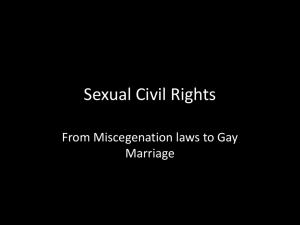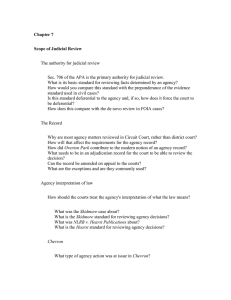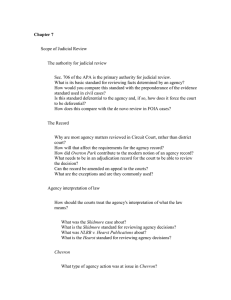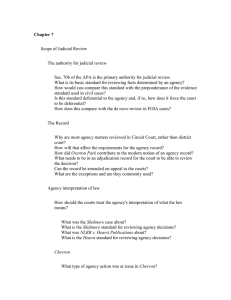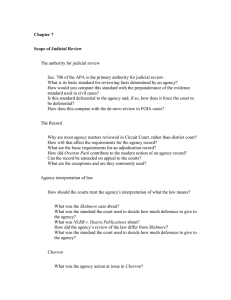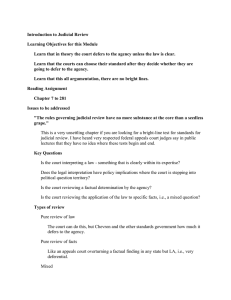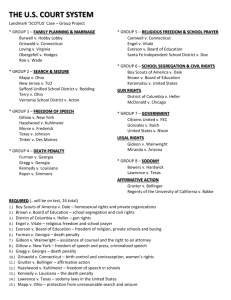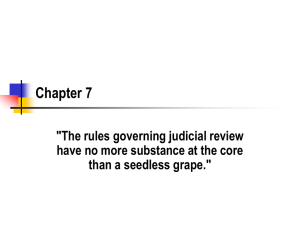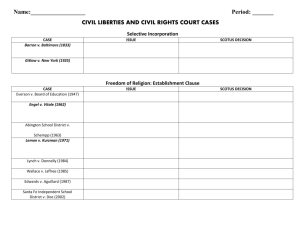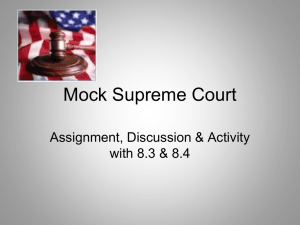Reading the Tea Leaves – Future of SCOTUS
advertisement
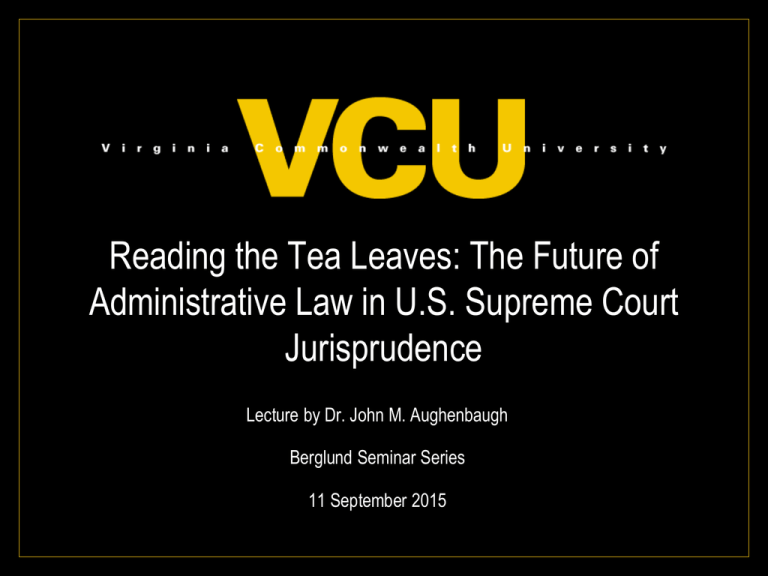
Reading the Tea Leaves: The Future of Administrative Law in U.S. Supreme Court Jurisprudence Lecture by Dr. John M. Aughenbaugh Berglund Seminar Series 11 September 2015 Focus of Remarks • • • • What is administrative law? U.S. Supreme Court (SCOTUS) precedent 2014-15 decisions causing questions Tentative predictions RE future admin law jurisprudence What Is Administrative Law? Standard definition: “The body of law that is concerned with actions by administrative agencies.” (Cooper; 2000) Schwartz (1976): What powers may be vested in admin agencies? What are the limits of those powers: What are the ways in which agencies are kept w/in these limits? Historical Context • Pre-New Deal – Not much discussion of what were the sources or how to cabin admin power, as most admin work done at state level • Post-New Deal – Modern admin state & delegation of legislative power to executive branch agencies – Some agencies possess legislative, executive, & judicial power; a blending of gov’t power not explicitly stated in the Constitution Historical Context (con’t) • Democracy problem: how to hold accountable unelected gov’t officials who exercise delegated power (Rohr); • Administrative Procedures Act (1946) • Judicial deference (1940s – early 1970s) • Hard look doctrine & D.C. Court of Appeals (early 1970s) The Backlash – SCOTUS Precedential Benchmarks • Vermont Yankee v. NRDC (1978): Reviewing court cannot impose additional procedures beyond what is required by APA or Congress – rejection of D.C. Court of Appeals “hard look” standard • Motor Vehicle v. State Farm (1983): federal courts can force agencies when agencies rescind existing regulations as well as when creating new regulations to follow “arbitrary & capricious” standard – clarified what agencies had to do and what federal courts could expect of them • Chevron v. NRDC (1984): clarified what the federal courts could expect of agencies when congressional intent is or is not clear – the “Chevron twostep” 2014-15 SCOTUS Decisions Giving Pause • King v. Burwell – Case facts – While SCOTUS (6-3) upheld federal gov’t tax subsidies, CJ Roberts’ majority opinion said Chevron deference did not apply on a matter of “deep economic & political significance” (whoa!); • Michigan v. EPA – Case facts – In a closely divided ruling (5-4), Justice Scalia writing for the majority held that per Motor Vehicle ruling, the EPA failed to exercise “reasonable” judgment in ignoring the costs of the new power plants regulations Implications • Are we seeing the slow death of the Chevron two-step (per King v. Burwell), and if so, what does this mean to judicial deference to agency interpretation? • Will a narrow majority of the current SCOTUS use Motor Vehicle “arbitrary & capricious” standard (per Michigan v. EPA) to force agencies to be more exacting in their decision-making? – If so, what might be the impact on agency rule-making? Tentative Predictions • • • While some conservative commentators are hoping for the SCOTUS to eviscerate judicial deference to agency rule-making, assuming that such rules reflect liberal, big gov’t interventionism, I am skeptical that is what will actually occur; Judicial deference cuts both ways politically, and conservative POTUS administrations would like to receive the same deference to their agency rulemaking; I suspect that outliers like Michigan v. EPA will continue to garner SCOTUS attention (the EPA largely made no effort to engage in reasonable evaluation of costs and flaunted its behavior in federal court), but Chevron deference will continue to hold a majority of the SCOTUS

